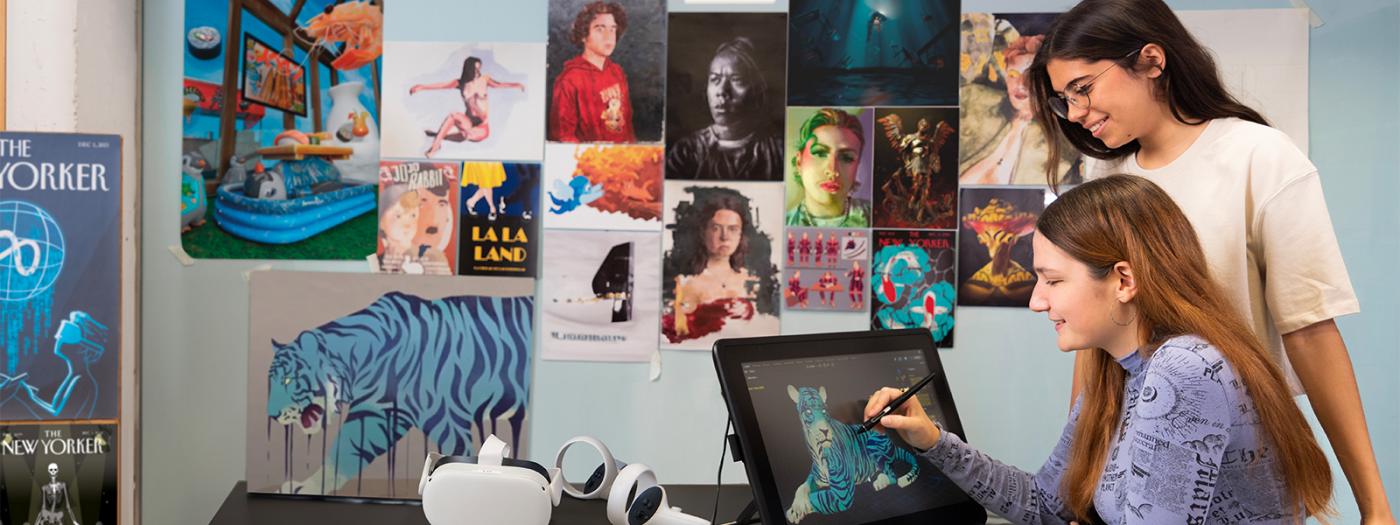Titular Professors
Unit 1. Introduction and basics of Blender
Unit 2. Hard-surface modeling
Unit 3. Hardsurface UV
Unit 4.Organic modeling
Unit 5. Organic UV
Unit 6. Shading
Unit 7. Texturing
Unit 8. Lighting, render and postproduction
It works through different active teaching methodologies and project-based learning. Although there are Master
Classes, the demonstrative and practical ones predominate. These are carried out by the students individually with the
continuous supervision of the teacher.
At certain moments of the syllabus, learning based on problems and exercises is applied, so that the student has to
face situations that make him leave his comfort zone. In this process, the student has to think about solving more
complex situations by merging various techniques and applying the theory.
At the beginning of each session, any doubts that resulted from the previous practice or session are resolved.
Afterwards, the theoretical-practical part is discussed so that students have the knowledge and tools necessary to
develop the approaches and achieve the new goals
Didactic activities are offered with specific audiovisual material to become familiar with the technical vocabulary and
develop their professional growth through practice and experience.
At the beginning of the course, the exercises that make up the continuous assessment of the entire course and the
route to follow to achieve the purpose of the subject are presented.
At the beginning of the most important practices there is a reception of preparation, and at the end, a closing to draw
conclusions and learn from mistakes.
Throughout the course, the student receives individual and group feedback to evolve and have the opportunity to
rectify, improve their work and have constant growth in their learning.
There will be several partial practices of continuous evaluation corresponding to each of the subjects. And a final
project at the end of the course.
To assess whether the student has reached an adequate degree of the objectives pursued by the subject, different
continuous assessment activities are used, with an approximate weekly frequency.
Objectives of continuous evaluation:
- The main objective is to help students keep the subject up to date and achieve a good working method, which helps
them assimilate the subject, teach progressively, and obtain good academic results.
- It also allows assessing the student?s work every day, without their grade depending solely on the practicals carried
out.
- For the teacher, it helps to have more information about the work done by the students and a better knowledge of
them, both academically and personally.
The percentage of the evaluation will be distributed as follows:
5%: 3d primitive scene
10%: 3d modelling with hard-surface1
5%: Hard-surface UV
10% Organic 3d modelling
5%: Organic UV
20%: Project (Modelling & UV)
5%: Shading
10%: Texturing
30%: Final project
- Deliveries must comply with the established rules and deadlines.
- The minimum grade for deliveries to average is 4.
- Students who do not attend 70% of the classes in a subject will lose the right to the final evaluation and the July
recuperation. In this case the subject must be repeated the following academic year.
- The student passes the ordinary call if he has a class attendance of more than 80%, has completed at least 90% of the
different activities and the average mark exceeds 5.
- The student who does not pass or does not deliver 70% of the deliveries (including former students) will not be
entitled to the extraordinary exam in July.
- If the student does not pass the ordinary call, she will have the right to an Extraordinary Call in July and must deliver
those practices with a grade lower than 4.
- A student who submits work that is not their own and it is proved that another students has done the work will be
considered to have partaken in very serious misconduct. The student will receive a 0 for the work in question and an
NP for the subject. The incident will be recorded on the academic record of both students involved.
- The examination board will apply these regulations, taking into account the progress of the student and their
academic performance.
See student regulations on the web:
The categorization of the evaluation activities of the subject is as follows:
- Partial practices: highly significant.
- Evaluation test: highly significant.
Students who, in their first academic year, fail to pass 20 ECTS of their enrolled subjects in the first and second calls,
will be not be able to continue on the degree course.
?Blender 2.80 Reference Manual.?, Blender Foundation, https://docs.blender.org/manual/en/latest.Siddi, Francesco.
?Get Started: Blender fundamentals? Blender Cloud Courses, Blender Foundation,
https://cloud.blender.org/p/blender-fundamentals.
?Fresh Blender News, Every Day?, Blendernation, https://www.blendernation.com
?Home of the Blender Community?, BA: Blenderartist.org, https://blenderartists.org
Official web page Substance Painter: https://docs.substance3d.com/spdoc/
Community and Learning Substance Painter: https://www.adobe.com/es/creativecloud/3d-ar.html /
https://helpx.adobe.com/es/substance-3d-painter/tutorials.html
Forum Substance Painter: https://community.adobe.com/t5/substance-3d-painter/ct-p/ct-substance-3d...
